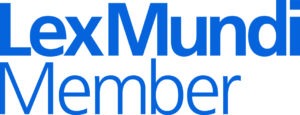Vietnam’s Ministry of Health is drafting a circular on compulsory licensing for pharmaceutical patents. From the view of protecting and promoting innovation in the industry, it is worthwhile to consider whether this is the appropriate time to introduce such regulations. This circular, a draft version of which has been released for public comment, could create a slippery slope into abuse of the patent system if certain shortcomings are not addressed.
International Practice
The TRIPs Agreement, since taking effect in 1995, has recognized compulsory licensing as an exception to patent rights in restricted situations, setting out conditions and limitations for any invocation of the compulsory licensing mechanism. The 2001 Doha Declaration on the TRIPS Agreement and Public Health shed further light on compulsory licensing in the pharmaceutical area.
In Southeast Asia, several countries have granted compulsory licenses for pharmaceutical products. Malaysia took the lead in 2004, issuing the world’s first compulsory licenses under TRIPs to allow importation of three medicines combatting HIV/AIDS. Indonesia followed suit and issued compulsory licenses in two waves, one in 2004 and another in 2012. During the political chaos from 2006 to 2008, Thailand also granted compulsory licenses for seven drugs.
At first, these countries issued the compulsory licenses to address healthcare crises related to dangerous epidemics. However, over time, there has been a tendency to use compulsory licenses to facilitate public access to drugs to treat non-communicable diseases as well. This has stirred up massive debates in these countries and also in the international forum in respect of the legitimacy of compulsory licensing and the real benefits it could bring about.
As a developing country with a large and diverse population and corresponding healthcare needs, Vietnam has been keeping an eye on regional practice, with a view to introducing the most effective mechanism of compulsory licensing.
Domestic Situation
The concept of compulsory licensing first appeared in Vietnamese legislation in the Ordinance on Protection of Industrial Property (1989), and was significantly improved through the passage of the Law on Intellectual Property of 2005. However, Vietnam has still not made full use of the mechanism. The closest it has come was in the outbreak of the bird flu epidemic, which claimed a toll of 41 victims in November 2005. The regulatory agencies considered granting compulsory license for certain antiviral drugs, but the manufacturer eventually issued voluntary licenses to some local producers and no compulsory license was needed.
However, even if there had been no voluntary licenses, Vietnam would have encountered statutory obstacles in granting the compulsory license due to the lack of specific regulations on the issue, as well as the country’s effort to attract investment as it readied for WTO accession. The current effort to formally legislate compulsory licensing should also be considered in the context of Vietnam’s desire to attract investment and the need for compliance with international commitments.
Shortcomings of the Draft Circular
While the draft circular marks a serious effort to provide further guidance on compulsory licensing in the pharmaceutical area, it creates some discrepancies with other existing legal instruments regarding matters such as the conditions for granting compulsory licenses, the procedures for examining applications, and the calculation of “adequate remuneration” in the event of a compulsory license. The draft also runs contrary to the TRIPs Agreement as well as the IP Law in its omission of a requirement for a prior unsuccessful negotiation between the patentee and the compulsory license applicant.
In some articles, the wording is quite broad and vague, which could invite arbitrary application or confusion in implementing the regulations. Most critically, under Article 4, compulsory licensing could apply in cases involving “…a drug necessary for the treatment of diseases with high contraction rates in the community, a drug necessary to save a human life, and other events as determined by the Minister of Health”. In other words, almost any medicine could be vulnerable to compulsory licensing.
Patent holders may feel the current draft is biased against them, as it does not offer any regime allowing patent holders to raise their dissent or even state their positions during the compulsory license examination process, and limits their avenues to protest compulsory license rulings. In addition, the draft does not require applicants to pay fees, but compels patent holders to pay fees when applying for a termination of the compulsory license.
Finally, it is debatable whether there is an urgent need for a compulsory licensing circular at this juncture. Since the bird flu outbreak in 2005, there have been no situations that could trigger compulsory licensing. Other issues such as the obstacles in the withdrawal of marketing authorization in cases of patent infringement are arguably more pressing and more vital to the development of Vietnam’s medical and scientific capacity. Regardless, before enacting this circular, we believe the Ministry of Health needs to go to greater lengths to make the draft consistent with other laws and ensure fair treatment for all businesses in the economy.




